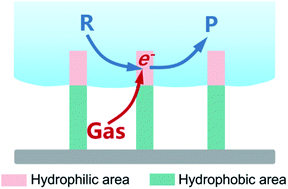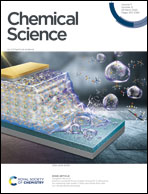Enhanced catalytic reaction at an air–liquid–solid triphase interface
Abstract
Gaseous reactant involved heterogeneous catalysis is critical to the development of clean energy, environmental management, health monitoring, and chemical synthesis. However, in traditional heterogeneous catalysis with liquid–solid diphase reaction interfaces, the low solubility and slow transport of gaseous reactants strongly restrict the reaction efficiency. In this minireview, we summarize recent advances in tackling these drawbacks by designing catalytic systems with an air–liquid–solid triphase joint interface. At the triphase interface, abundant gaseous reactants can directly transport from the air phase to the reaction centre to overcome the limitations of low solubility and slow transport of the dissolved gas in liquid–solid diphase reaction systems. By constructing a triphase interface, the efficiency and/or selectivity of photocatalytic reactions, enzymatic reactions, and (photo)electrochemical reactions with consumption of gaseous reactants oxygen, carbon dioxide, and nitrogen are significantly improved.

- This article is part of the themed collections: Celebrating the 110th Anniversary of chemistry at Soochow University and SU 120: Celebrating 120 Years of Soochow University


 Please wait while we load your content...
Please wait while we load your content...